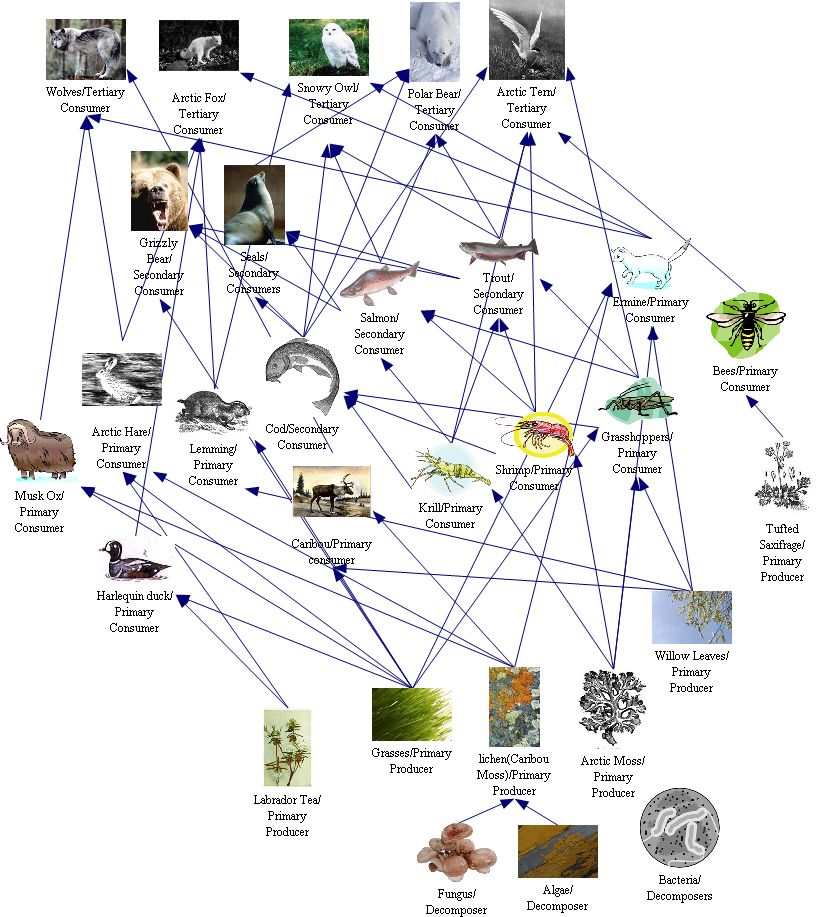Alpine Tundra Animals Food Web

The peregrine falcon and the tundra shrew.
Alpine tundra animals food web. People also love these ideas In these parts of the world, food scarcity prompts animals to migrate downhill in the search of food, and therefore, very few species are found here all year round. Climate, location, plants and animals.
The arctic seal is eaten by the polar bear and eats the atlantic salmon A consumer is the ecology of the tundra is defined by the range of species at all levels, forming food chain. The high elevation causes an adverse climate, which is too cold and windy to support tree growth.
Its summer season can go from june to september, while it's winter season can range from october to may. There are lots of different plants that grow in the alpine tundra. The food chain in the arctic tundra consists of predators such as owls, foxes, wolves, and polar bears at the top of the chain.
Atop the food chain are tundra carnivores, such as arctic foxes (vulpes lagopus), arctic wolves (canis lupus), snowy owls (bubo scandiaca), and polar bears (ursus maritimus), which move into the tundra during the summer when prey is plentiful and their usual hunting grounds on sea ice diminish. Example of tundra food chain. Then add pictures with the name
A few of the common north american animals if the alpine tundra are marmots, mountain goats, bighorn sheep, and pika. Abiotic factors of the alpine / description similar to the arctic, the alpine is very windy and cold in temperature. In the arctic tundra, many types producers, including flowering plants, low shrubs, sedges, grasses, mosses and algae, use the sun’s energy during the process of photosynthesis.
The growing season is approximately 180 days. Omnivores and carnivores (secondary consumers) such as arctic foxes, brown bears, arctic wolves, and snowy owls top the web. There are many animals living and adapting to their environment everyday due to climate, plants, landforms, and other animals that they can eat or that might eat them.














